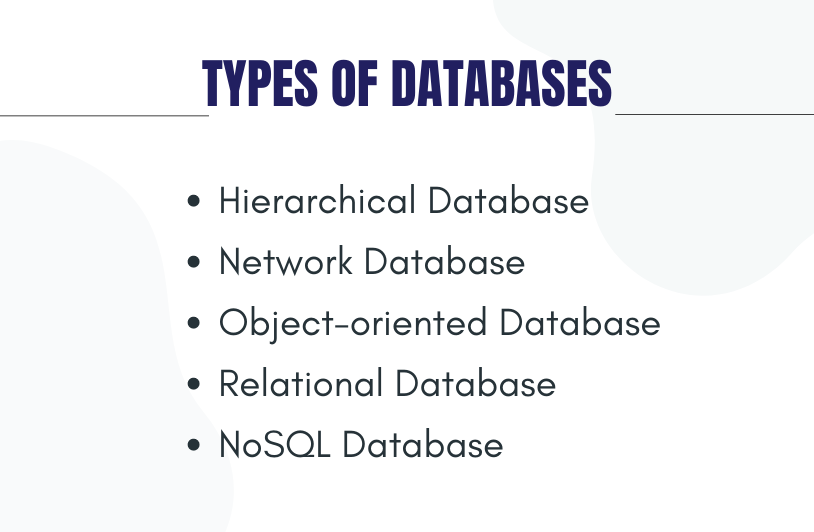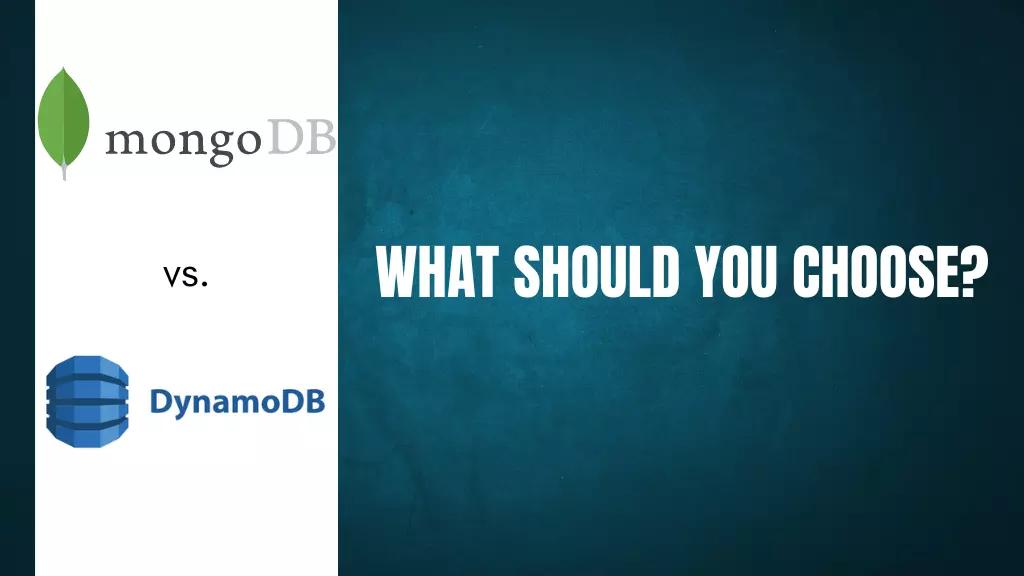The database is the key element when developing software or any application, and Big Data has changed everything. Be it managing the data or storing them safely it has catered to all the individual requirements of every developer and business.
Whether scalability, flexibility, or any other important aspect of a database it is imperative to keep everything on point according to the project requirements to avail the best execution.
In this article, we will be reviewing the two well-known and widely preferred databases i.e. MongoDB and DynamoDB, and will be comparing them to help you choose the best for your project.
But before moving ahead with both these databases, it is important to understand what a database is and what it does.
Generally, a database is an organized collection of structured data, that is stored in a centralized database management system.
It allows storage and access to all types of data and information which includes customer data, transactions, product details, and other important data whenever needed.
It offers an efficient way of handling a large amount of data which also helps the decision-making process easier and quicker.
It is important to know that in general, databases are of five types which include hierarchical database, network database, object-oriented database, relational database, and NoSQL database.

-
Hierarchical databases - It is a database model where the data is organized into a tree-like structure, where the data is stored as records and connected to one another through links.
-
Network databases - It is a database that is organized as per the ownership of records, allowing them to have multiple owners and also providing multiple access paths to the data.
-
Object-oriented databases - Also known as OOD, it is another database model that can work with complex data objects, and where the data and information are represented in the form of objects.
-
Relational or SQL databases - Also known as SQL databases, it organizes the data in predefined relationships where they store the data in a tabular format (in rows and columns), making it easy to see and understand the differences between the data structures.
-
NoSQL databases - Another important database model that provides a mechanism for storage and retrieval of data in documents rather than relational tables.
Since MongoDB and DynamoDB are both among the types of NoSQL database formats we will be comparing both and help you decide which database system you should choose for the project.
What is MongoDB?
It is a cross-platform, general-purpose, and document-oriented database program written in C++, Javascript, and Python. It is developed by MongoDB Inc and is classified as a NoSQL database program and is licensed under the Server Side Public License (SSPL).
It uses BSON (Binary Javascript Object Notation) formatted documents for managing and storing data and additionally also supports field, range query, and regular-expression search functions.
It supports a wide range of programming languages that includes C, C#, Python, Ruby on Rails, Rust, Scala, and many more.
Read: What is MERN Stack & How Does It Works
Also, it is schema-less, which means that it doesn’t require any matching data schemas across documents which makes it flexible and fast as compared to other databases.
Pros and Cons of MongoDB
Now that we have a basic understanding of MongoDB it is also important to learn about the advantages and disadvantages of the same. So here we go.
The pros of MongoDB are -
-
The primary advantage of MongoDB is that it has flexible database schemas, which also support more native data types and also allow you to nest documents.
-
It highly accommodates the large volumes of rapidly changing systems design allowing the developers to add to the scheme according to the requirements.
-
Additionally, it supports various data models like regular JSON and advanced BSON models such as date, timestamp, geospatial, Decimal128, and many more.
-
It offers cost-effective ways for the users which means that if you are cost conscious you can use the free and open-source version. And additionally also offer a pay-as-you-go version to manage their services efficiently.
-
An added advantage of using MongoDB is that it is simple and easy to install, has powerful querying and analytics capabilities, and provides easy horizontal scale-out with sharding.
-
Since, MongoDB stores all its data in RAM, it operates quickly while executing queries.
The cons of MongoDB are -
-
MongoDB relies on RAM for storing data which makes it expensive for many use cases.
-
Joining documents in MongoDB can be time-consuming.
-
It has limited data size and nesting capabilities, where it allows a document limited only to 16MB and allows nesting to only 100 levels.
-
One major drawback of MongoDB is the duplication of data which makes it difficult to handle data sets as the relations are not well-defined and may lead to data corruption.
What is DynamoDB
Also known as Amazon DynamoDB is a fast and flexible NoSQL database. It was first released in 2012 and supports key-value and document-oriented data which are two types of NoSQL databases.
It is written in Java and is only functional through Amazon Web Services (AWS) and it also has smoother integration with other tools and services that comes with AWS. Additionally, it is also customizable according to your app’s priorities.
Read: What is Serverless Web Application Development
Also, it supports unlimited read and write operations under single-digit response time, which makes it suitable for mobile, web, gaming, and advertising technology.
Pros and Cons of DynamoDB
DynamoDB, which is offered by Amazon, is undoubtedly among the best databases available for you to use. But it is also necessary to learn about the advantages and disadvantages to help you choose the best while comparing MongoDB vs DynamoDB.
The pros of DynamoDB are -
-
The primary advantage of DynamoDB is that it is developed by Amazon, which implies that it uses AWS which helps in managing the updates, scaling, and availability, which makes the setup process fast and easy.
-
It also keeps the servers and backups running safely with out-of-the-box security features, which are only accessible only if you are a part of the AWS service.
-
It is serverless, which makes it good for large-scale performance and scales horizontally to support tables of any size.
-
An added advantage of DynamoDB is that it has a flexible schema which allows you to quickly adapt tables as per the needs without any need to restructure the table schema.
-
DynamoDB is fast with excellent performance and also provides seamless scalability regardless of traffic levels.
The cons of DynamoDB are -
-
DynamoDB has a limited query language since it is a key-value store and not a full document database.
-
Since its indexes are limited and complex, Amazon sizes and bills the indexes separately from the data.
-
Some other disadvantages of DynamoDB include that it is only deployable on AWS, the table joins are impossible, and there are no server-side scripts.
Comparing MongoDB vs DynamoDB
Until now we have discussed everything that you need to know about the two databases, but that is clearly not enough when you have to choose between them for your next project maybe.
Read: Top 10 NoSQL Databases in 2022
So below we are comparing MongoDB vs DynamoDB to help you understand and make the best choice according to your requirements.
-
MongoDB is open-source and can be deployed anywhere whereas DynamoDB can be used only within AWS.
-
MongoDB can be either self-managed or fully managed with MongoDB Atlas database as a service whereas, DynamoDB is a fully managed solution by Amazon.
-
MongoDB is excellent for scalability and caching and is used for mobile apps, and CMS (Content Management Systems) whereas, DynamoDB is highly preferred by the Gaming and IoT (Internet of Things) industries.
-
MongoDB has a rich query language and can be applied in multiple ways whereas DynamoDB's querying is available only in LSI (Local Secondary Indexes) and GSI (Global Secondary Indexes).
-
MongoDB is schema-less but allows schema-type storage while DynamoDB doesn’t allow any schema-type storage.
-
MongoDB supports a wide range of programming languages whereas DynamoDB supports a smaller range of programming languages.
-
MongoDB offers a variety of data types while DynamoDB offers only three types of data for primary keys.
Conclusion
Above we have made a comparison of the highly successful modern databases i.e. MongoDB vs DynamoDB with all the answers you might be seeking before choosing the right database.
Read: Top 11 Popular Database For Web App Development
When choosing the database you need to keep in mind a few aspects such as scale, user requirements, deployment method, storage requirements, and other important functionalities and features.
Also as per the comparison done between these two databases, it is clear that MongoDB is much more efficient and shall fit almost every business's needs.
Looking for web app developmment: Connect with us
And finally when you are getting closer with the choice make sure that it fits all the use cases as per your business requirements and also that fits your project’s specific needs and resources and helps you develop a future-proof application.

